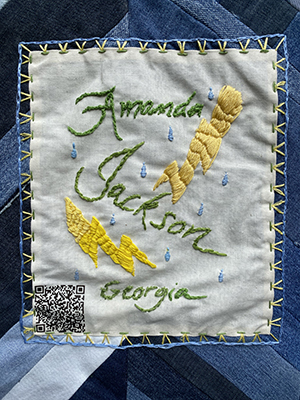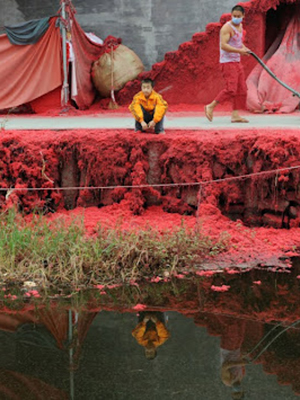Amanda Jackson
"I was born in Glasscock county, about twelve miles from Davisboro, Georgia. My master's name was Lowry Calhoun. He was a rich man and he had a big plantation and about fifty slaves or more. Besides me I had two sisters and one brother. I was the youngest child. All of the slaves on the plantation worked in the fields. On this plantation they raised practically everything --corn, cotton, wheat, and rye, and a heap of livestock. They were running about twenty-five or thirty plows all the time. There was one overseer. They were in the fields before the sun rose and there until after it went down–from sun to sun.
“All that I could do then was sweep the yards, water the cows and the chickens, and then go to the pasture to get the cows and the calves. We had two pastures, one for the calves and one for the cows. I had to get the cows so the women could milk them. All of the hard work on the plantation was done in the summertime.
“In rainy weather and other bad weather all that they had to do was to shell corn and to help make cloth.The white folks clothes and all of the slaves clothes were all made on the plantation. The master's wife could sew and she and her mother and some of the slaves did all of the spinning and weaving on the place. I've worked many a day in the house where they made the cloth. To color the clothes they made dyes out of all kinds of barks. If they wanted yellow stripes, they used dye made out of hickory bark. There was always plenty of clothes for everybody because they give two complete outfits two times a year–one in the summer and one in the winter. For blankets we used homespun spreads.” – Amanda Jackson
 Doa Altay ’26
Doa Altay ’26
The textiles industry is the second largest polluter of our planet, and is responsible for 8% of all carbon emissions and 20% of all wastewater. Thanks to fast fashion, clothing brands now release cheaper products at twice the rate they did before 2000, leading to greater consumption and disposal.
The average American today buys triple the amount of clothing than they did in 1950. Making that amount of clothing each year creates more greenhouse gas emissions than all international flights and maritime shipping combined. Other than making your own clothes, the only way individuals can lessen their fashion carbon footprint is to buy used clothing.
Nadine Moustafa, Research Postgraduate at Imperial College’s Department of Chemical Engineering, says “The good thing about ‘vintage’ is that it promotes resale and wearing preloved items. But we must overcome this strange, irrational mental block about wearing something someone else has already worn.”

At Brandeis, the Department of Theater Arts hosts a free clothing giveaway every fall, and students are encouraged to drop off any clothing they don’t want and pick up something fun and new (to them). Any items not used are donated to charity.
Sources
- Federal Writers' Project: Slave Narrative Project, Vol. 4, Georgia, Part 2, Garey-Jones. 1936. www.loc.gov/item/mesn042
- “Fashion forward: How to combat climate change through clothing,” Imperial College London
- “The Environmental Impacts of Fast Fashion on Water Quality: A Systematic Review. Water 2022, 14(7), 1073.